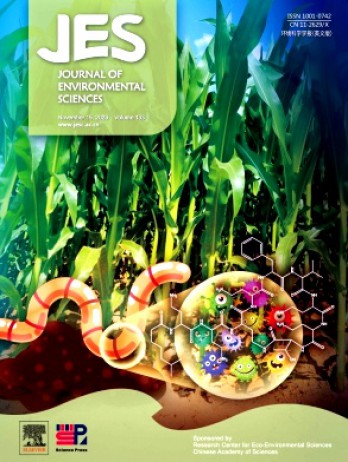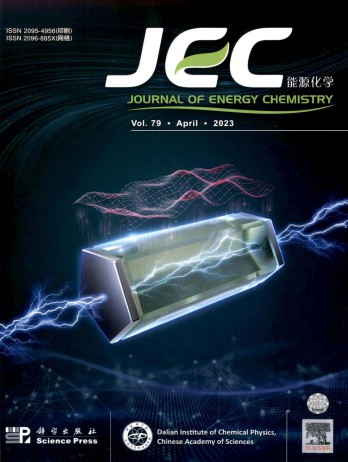一般情況下《Journal of Arid Land》雜志投稿被拒,版面費有可能退還,具體取決于期刊的相關政策和實際情況,詳細信息可聯系雜志社或咨詢在線客服。
1. 投稿被拒但尚未支付版面費
如果稿件在審稿階段被拒,且尚未支付版面費,自然無需考慮退款問題。
2. 已支付版面費但被拒稿
一般可退:大多數期刊(包括《Journal of Arid Land》雜志)在退稿后會退還版面費,尤其是如果期刊尚未進入排版或出版流程。
部分扣除審稿費:有些期刊可能會扣除部分審稿費用(如已進行外審),剩余部分退還。
3. 特殊情況
已排版但未出版:如果期刊已完成排版但尚未正式出版,部分期刊可能按比例扣除部分費用后退還剩余款項。
已出版后撤稿:如果論文已正式發表,通常不退版面費,因為費用已用于編輯、排版和出版流程。
4. 如何申請退款
聯系雜志社:通過郵箱或電話與《Journal of Arid Land》雜志雜志社溝通,說明情況并申請退款。
提供支付憑證:如需退款,可能需要提供匯款記錄或發票信息。
《Journal of Arid Land》雜志投稿建議:
Keywords: Immediately after the abstract, provide 3 to 7 keywords, closely related to the subject of the article. Avoid general and plural terms and multiple concepts (e.g., 'and', 'of').
Introduction: Provide an adequate background. State the significance, objective and method of the research, citing necessary references, especially references of work published in the last two to three years.
Study area/materials and methods: Introducing a general idea of the study area or experimental setting, the materials and methods used and the basic progress of the study. Provide sufficient detail to allow the work to be reproduced or substantiated.
Methods already published should be indicated by a reference.
Results: Relating the findings and results of the observation(s) and experiment(s) without interpreting their meaning. Results should be clear and concise.
Discussion: Explaining all of your observations within your experiment(s). Exploring the significance of the results, but do not repeat them in the text. Stating whether each of your hypotheses are supported, rejected or if you cannot make a decision with confidence, and suggesting future studies or modifications to the same study.
Conclusions: Presenting main conclusions of the study that may stand alone or creating a discussion subsection.
Acknowledgements: Acknowledgements should include, if applicable, information on grants received, funding organizations, and/or recognition of people who assisted in the research or article.
References: Please cite a reference to acknowledge sources of information from others’ research and results. Ensure that
every reference cited in the text is also present in the reference list. Citation guidelines are as follows: as (Smith, 1998) for single author, as (Smith and Miller, 1999) for two authors, and as (Smith et al., 2006) for three or more authors. Groups of references should be listed first chronologically, then alphabetically. In the reference list, references should be arranged first alphabetically, then chronologically, if necessary. More than one reference from the same author(s) in the same year must be identified by the letters "a", "b", "c", etc., placed after the year of publication. Journal names should not be abbreviated.
Reference examples:
Articles: Ames R N, Reid C P P, Porter L K, et al. 1983. Hyphal uptake and transport of nitrogen from two 15N-labelled
sources by Glomus misseae, a vesicular-arbuscular mycorrhizal fungus. New Phytologist, 95(3): 381?396.
Monograph: Lambers H, Stuart Chapin ΙΙΙ F, Pons T L. 2008. Plant Physiological Ecology. 2nd ed. New York: Springer Science+Business Media, 56?64.
Proceedings: Bernstein N, Kafkafi U. 2002. Root growth under salinity stress. In: Waisel Y, Eshel A, Kafkafi U. Plant Roots,
the Hidden Half. New York: Marcel Dekker Press, 787?805.
Electronic reference: UNESCO World Heritage Centre. 2008. Operational Guidelines for the Implementation of the World
Heritage Convention. Paris: UNESCO World Heritage Centre. [2009-11-17].
《Journal of Arid Land》雜志是由中國科學院新疆生態與地理研究所;科學出版社主辦的歷史學術期刊,創刊于2009年,雙月刊國內外公開發行,國際刊號:1674-6767,國內刊號:65-1278/K。
該雜志以反映歷史改革與發展最新成果、探索歷史規律為宗旨,學術視野覆蓋了學術論文、專題評述、研究簡訊、學術動態、書評等多元領域。
《Journal of Arid Land》雜志在學術界具有較高的影響力,其收錄與榮譽有:中國優秀期刊遴選數據庫、中國期刊全文數據庫(CJFD)、中國學術期刊(光盤版)全文收錄期刊、中國科技期刊優秀期刊、CSCD 中國科學引文數據庫來源期刊(含擴展版)、統計源期刊(中國科技論文優秀期刊)、知網收錄(中)、維普收錄(中)、萬方收錄(中)、SCI 科學引文索引(美)、Pж(AJ) 文摘雜志(俄)、哥白尼索引(波蘭)、劍橋科學文摘、國家圖書館館藏、上海圖書館館藏、文摘與引文數據庫、文摘雜志等。無論是學術研究還是實踐指導,《Journal of Arid Land》雜志都能提供可靠的支持。
聲明:本信息依據互聯網公開資料整理,若存在錯誤,請及時聯系我們及時更正。



